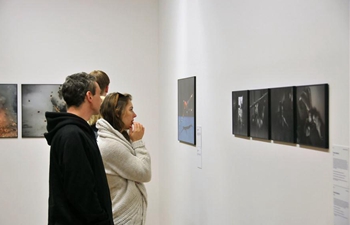ROME, Jan. 17 (Xinhua) -- Italian banks are looking healthier now than they have for the past few years and will continue to heal in 2018, Standard & Poor's Global Ratings said in a report on Tuesday evening.
The ratings agency said improved private-sector creditworthiness, coupled with banks' efforts to repair their balance sheets, have paved the way for "a return to some moderate profitability" in the current year.
Lenders strengthened their capital, bolstered loan-loss reserves, reduced their stocks of nonperforming loans (NPLs), and cut costs, according to S&P analysts.
On the downside, S&P estimated that at year-end 2017, banks still held toxic loans worth 275 billion euros on their books.
This was down from 349 billion euros' worth of gross NPLs held by Italy's banks at the end of 2016, according to the finance ministry's 2017 Economic and Financial Document (DEF).
According to the European Systemic Risk Board (ESRB), keeping NPLs on the books too long, even if the banks cover them with provisions, is bad for the real economy in the long run.
"The presence of an elevated NPL stock is a symptom of broader solvency problems in the real economy. All these factors adversely affect potential economic growth," the ESRB wrote in a July 2017 paper titled "Resolving NPLs in Europe".
Italy is slowly pulling out of two economic recessions that were sparked by the global financial crisis of 2008 and by the sovereign debt crisis of 2010.
According to the Bank of Italy, national GDP contracted 7 percent and industrial production plunged 25 percent in 2007-2012.
The prolonged downturn caused households and businesses to default on their loans, and deteriorated credit jumped from 4.5 percent at the end of 2007 to 12.3 percent by mid-2015, according to the Italian central bank.
Government intervention to support troubled institutions has helped preserve financial stability and restore market confidence, and this in turn has contributed to the ongoing recovery, S&P analysts said.
Among such intervention was a European Union-approved move early in 2017 to increase public debt by 20 billion euros to rescue the country's third-largest lender, Monte dei Paschi di Siena (MPS), and other ailing banks.
That measure is being widely criticized by the opposition as a handout to banks ahead of the next general election on March 4.
However, Finance Minister Pier Carlo Padoan explained on his ministry's official website that it was necessary to rescue the banks, rather than let them fail, because their clients include hundreds of thousands of small and medium businesses, which are the backbone of Italy's economy.

















